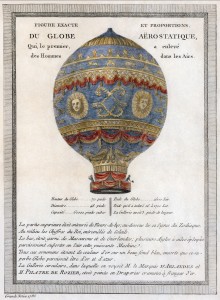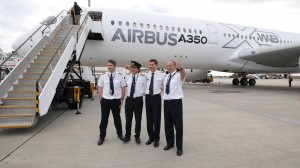RAAF F-35As to be on site:
The big news is, of course, that Australia’s first two F-35A Joint Strike Fighter aircraft will be taking a break from their training duties at Luke AFB in the USA and are scheduled to arrive at Avalon on Friday the 3rd of March. Unlike previous events where we had the full scale mock-up on display, the RAAF are going to have two of the real things there. There’s no indication whether they’ll be doing any flying during the show but they will be on static display at least. We’re waiting to hear from the RAAF Media team as they’re the ones coordinating the aircraft, not Lockheed Martin.
F-35 Expo Tent:
Lockheed Martin’s big drive will be their F-35 Expo tent which will be featuring 14 Australian companies that are supplying to the global F-35 program. Among many other items, the tent will feature a mock-up Pratt & Whitney F135 engine on a Maranz engine trailer which will be quite a feat to get into the display given how large and heavy it is.Tuesday’s media briefings will commence in the morning with LtGen Davis from the USMC who will brief on the F-35B’s operations in the Asian region with particular attention to their deployment to Japan. The F-35B model features the forward lift fan and rotating rear exhaust nozzle which work together to provide Short Take Off and Vertical Landing (STOVL) capability.
Later on Tuesday there will be a combined briefing from the Joint Strike Fighter (JSF) division within Australia’s Capability Acquisition and Sustainment Group (CASG) and the JSF’s Joint Program Office (JPO) featuring LtGen Bogdan (head of the JPO) and Lockheed Martin’s Tod Mellon. This will focus on industry involvement and how the F-35 is impacting Australian industry.
On Wednesday morning there’s a tentative plan to have a social media event where I’ll be with Lockheed Martin and once again we’ll get to check out the F-35 Cockpit Demonstrator, receive a briefing and inspect the F-35 mockup. We’ll know more about this closer to next week so watch this space for news :)On Thursday the F-35 tent will feature a round-table where journalists can come in, walk around and do one-on-one interviews with industry executives from the 14 Australian companies on display at the tent. This was described by one person on the conference call as a “Speed Dating” type of event :)
Finally, on Friday morning there will be a briefing from Jeff Babione (Lockheed Martin’s General Manager of the F-35 program) with a production update on the program going forward.
Other Lockheed Martin Divisions at the Show:
Of course there’s much more to Lockheed Martin than the F-35 and at Avalon 2017 they will have a number of displays and staff members on-site relating to their involvement with the following items:
- RAAF’s Plan Jericho, including AIR6500’s joint battle management system which could include integration of the F-35s sensors with the AEGIS system on Navy’s new Air Warfare Destroyers
- Submarine systems (at an air show? Hey, why not! :) )
- Radar & surveillance systems (especially the Jindalee Operational Radar Network, aka JORN)
- Missiles & Fire Control including the Joint Air-to-Surface Standoff Missile (JASSM), Javelin, Hellfire, Paveway 2, Inferno and F-35 systems including advanced electro-optical components
- Training
- Logistics
They expect to have a pair of MH-60R “Romeo” helicopters there from Navy and will be celebrating the fact that all of the aircraft have been delivered within five years of the contract being signed, including having some aircraft already undertaking operations at sea.
There’s also a good chance that Australia’s first two Pilatus PC-21 aircraft will be on display at the show which would be a big plus for Lockheed Martin’s training division who are providing the PC-21 and their integrated pilot training system under AIR5428. This program will see pilot training migrated to the PC-21 at East Sale and Pearce under a consortium from Lockheed Martin, Pilatus and Hawker Pacific.“Generation Beyond” STEM module:
On Saturday the F-35 expo tent will be converted into a virtual-reality experience for younger students to experience F-35, Orion spacecraft and future space directions. This module was first rolled out at Farnborough Air Show in the UK and is intended to inspire students to become our future aerospace engineers, pilots & astronauts.
It’s going to be a busy show for Lockheed Martin and I’m looking forward to catching up with as many of their groups while I’m there.

















Preparing for Avalon 2017
Avalon 2017 Promo
Every two years the Australian International Air Show is hosted at Avalon Airport to the west of Melbourne. Generally referred to simply as “Avalon” or “Avalon Air Show,” the event comprises a trade show (the Australian International Aerospace & Defence Exposition) and an air show that’s open to the public on Friday afternoon through to Sunday.
As usual, I will be attending Avalon for the trade show industry days with a media pass to gather content for Plane Crazy Down Under but, for the first time ever, I’ll also be attending as an aerospace corporate (aka “trade”) visitor. Thanks to my job with Ocean Software, I have a number of clients & prospects to meet with and some events to attend during the trade days. It’s going to be interesting for me to attend the event with a more critical & technical interest in some of the exhibits than I’ve had previously.
During the last few Avalon events the trade and aircraft displays have been starting to feel rather “same-same” with only a couple of new items to be interested in, otherwise it has all been follow-ups and incremental information. This year’s event, however, has a number of new platforms from the RAAF that will be of great interest, including:
USAF F22 Landing
There’ll also be a couple of F-22As which are always spectacular to watch (and hear), some conference events I’m interested in attending, the warbird tarmac, a number of GA aircraft to check out and much more.
Of course, the classic Avalon rule of thumb applies for many aircraft (especially the military ones) that are promoted as attending the event: “Until the aircraft crosses the fence, lands, taxis in and goes unserviceable, it hasn’t really arrived at Avalon!”
I much prefer attending Avalon events on the trade days as the feel is quite different to public days. There are no barriers on the trade stands in the exhibit halls and the aircraft aren’t as heavily barricaded while the company & military representatives are more willing to discuss detailed technical aspects of their products. Of course, it’s also a whole lot less crowded!
Pitts Special Looking Great
By Friday morning the barriers are up in the exhibit hall to stop people just wandering onto the stand and trying to take anything not bolted down (this has actually happened in the past), some of the aircraft are leaving and the barricades around static displays get expanded. Given this, I’m planning to attend Tuesday to Friday for business and only attend on Saturday if I need an extra day to complete my content gathering for PCDU.
Despite everything, I do enjoy being at Avalon and have since I started working tarmac way back in 2001. Between the new platforms, the client work and catching up with friends, I’m actually looking forward to Avalon 2017 more than I have the previous two events. Watch this space!
It really gets crowded on the weekend